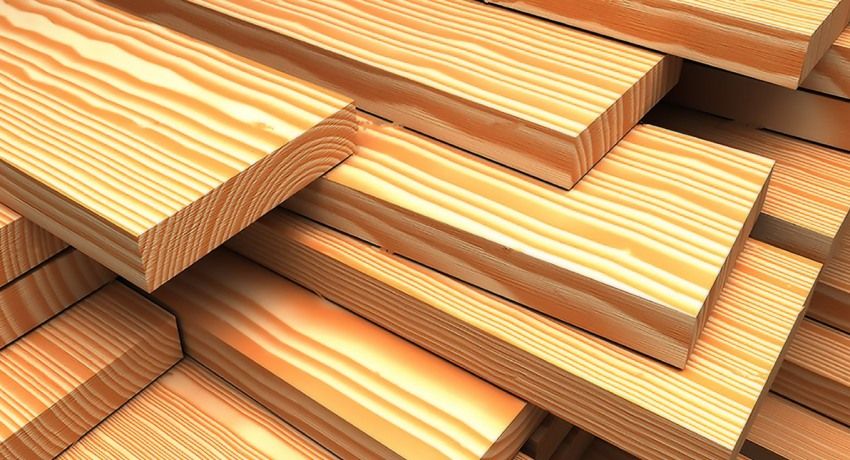Usually after repair or redevelopment comes the time of design registration of the home. There are many simple, but very effective methods for the subjective expansion of space with a simultaneous increase in illumination. The most time-consuming, but aesthetically effective, process is the creation of a ceiling design in the hall (the photo of the interiors from the “was – was” series prove this), moreover, besides the visual separation of space, you can achieve a real and radical change in the level of illumination. At the same time, you can do most of the work with your own hands. Plasterboard ceilings in the hall: photos and video installation instructions will help to understand the nuances of the work.
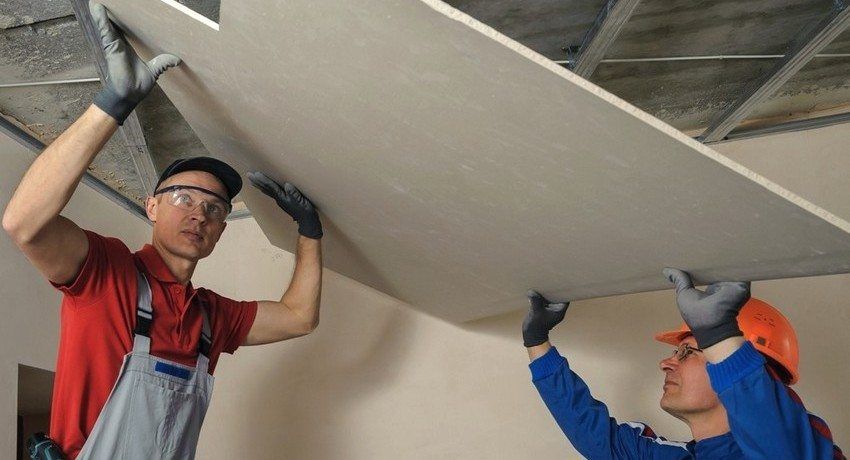
Advantages of drywall
Since GKL (gypsum plasterboard) is not only versatile, but also very simple to process, it is ideal for the design of the ceiling of a hall in an apartment. Photos and video installation instructions can be found on the Internet. They clearly show not only the stages of the workflow, but also a number of advantages of drywall:
- Drywall – one of the most cost-effective materials, which is always available in almost any store of goods for construction and repair;
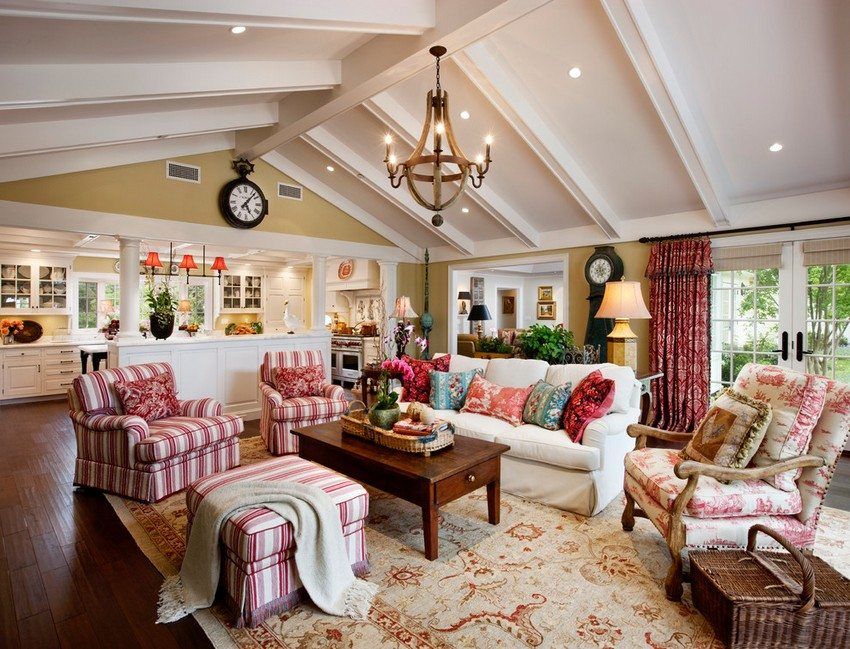
- drywall is easy to use, so the structures of it are mounted very quickly;
- behind suspended plasterboard ceilings you can best hide all types of wires and pipes of the ventilation system;
- drywall is very flexible, well bend, with the help of some simple, easily digestible techniques it can be given any shape. Due to this, the most daring design ideas can be realized with its help;
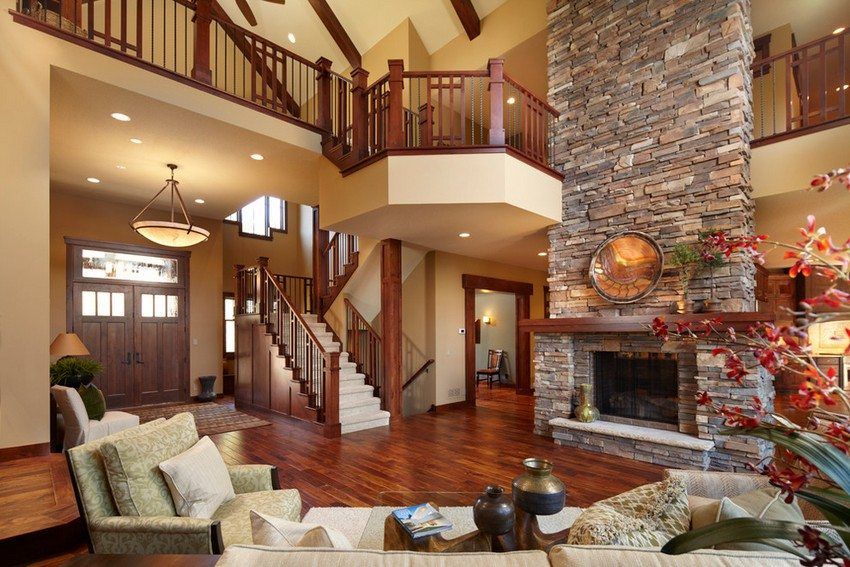
- if it is necessary to repair the ceiling, any drywall module can be replaced without disturbing the whole structure;
- It is a safe, environmentally friendly and hypoallergenic material. It has good fire resistance properties; it is hygroscopic in moderation: it absorbs excess moisture, but at the same time it easily discharges it into dry air, thereby maintaining air humidity within certain limits. Therefore, it can be used in the premises for any purpose, including children’s rooms, etc .;

- drywall due to looseness is a good heat insulator, besides, it is easily combined with foam or mineral wool, which creates additional thermal and sound insulation;
- drywall is indispensable, if necessary, quickly and with minimal cost to eliminate irregularities and roughness of the ceiling or walls;
- drywall finishing can be done without complex preparatory work;
- in the presence of plasterboard ceilings in the room, you can arrange any lighting.
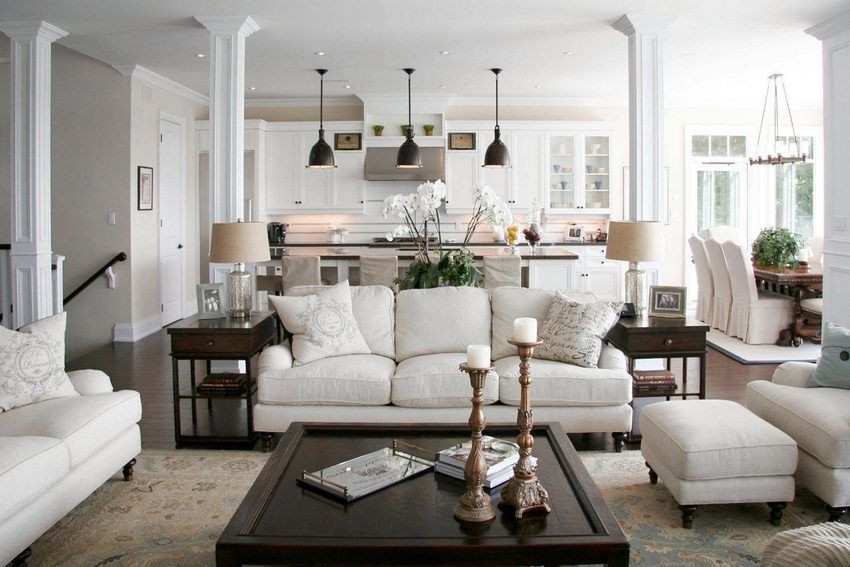
The installation process is simple to implement, but requires accuracy, so when the list of materials is concise, the toolkit may seem rather big.
We list the main materials and fixtures that will be needed for installation:
- sheets of gypsum plasterboard GKL and if necessary GKLV (gypsum cardboard of high moisture resistance);

- UD profiles (28X27 mm) and main CD ceiling profiles (60X27 mm). The guide profiles are an outline frame – they are mounted just below the ceiling along the entire perimeter of the room, and the main ceiling (carrier or longitudinal) profiles are already inserted and fixed in them. Between the main carrier profiles, the so-called main secondary profiles (transverse) are used as jumpers; drywall sheets are attached to them and the main profiles;
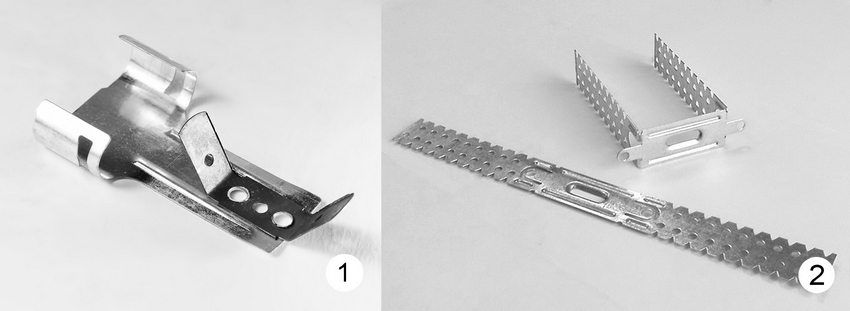
- direct (or universal) suspensions. There are analogues with clips, but universal U-shaped suspensions have a lot of frequent holes on the “wings”, which allow you to quickly adjust the height of the fixing profile. Suspensions themselves are attached to the main ceiling;
- dowels and anchors for fixing suspensions to the ceiling and guides to the walls, as well as crabs for coupling longitudinal profiles with transverse ones.

The living room can be called the “face” of an apartment, so the instrument should be chosen carefully, because the final result directly depends on its quality. The minimum set of tools for arranging a plasterboard false ceiling is as follows:
- water level (it is possible and normal, but then the marking procedure will require an order of magnitude more time and effort);
- joiner’s square or just a triangle to measure right angles when marking the ceiling;
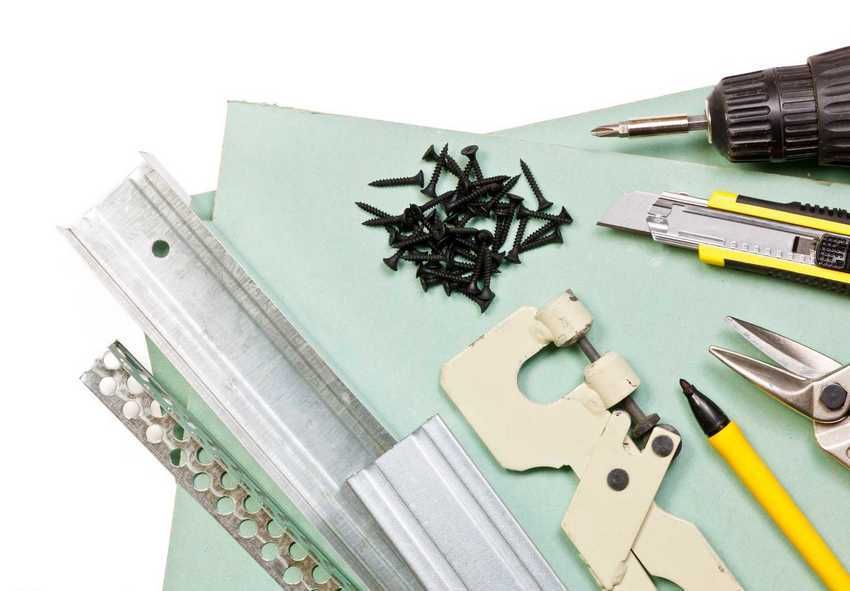
- painting otboyny cord. You can do with a pencil, but then you can not save efforts on multiple re-checking the accuracy of the markup;
- construction hacksaw;
- a screwdriver (otherwise you will have to tighten a hand screwdriver with up to a thousand screws per room of average size);
- plane;
- fishing line;
- roulette;
- drill puncher with nozzles for drilling, cutting holes and for mixing.
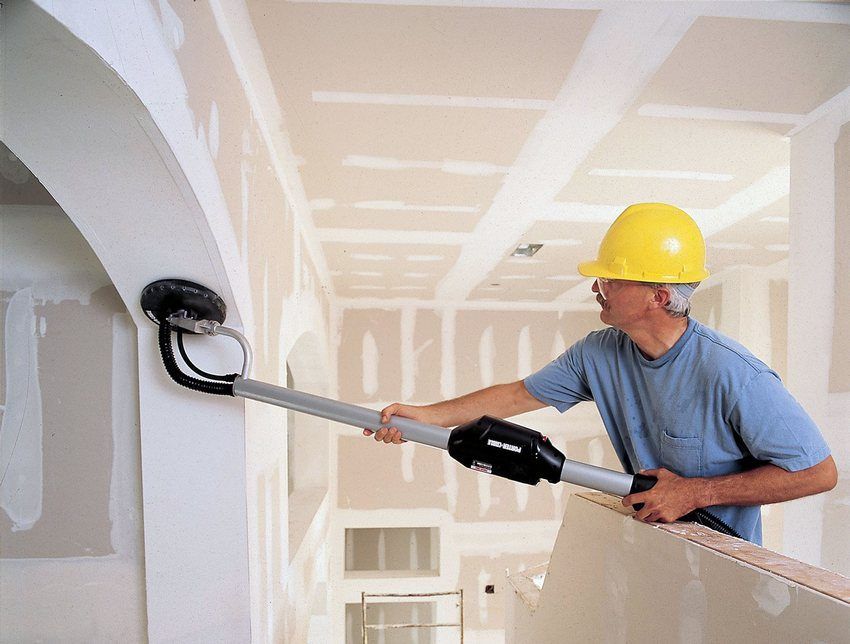
After the do-it-yourself installation of a plasterboard suspended ceiling in the hall (the photo confirms this), processing will be required to level the seams and achieve a perfectly flat surface. This will require:
- spatula and putty;
- construction knife;
- sandpaper;
- reinforcing tape.
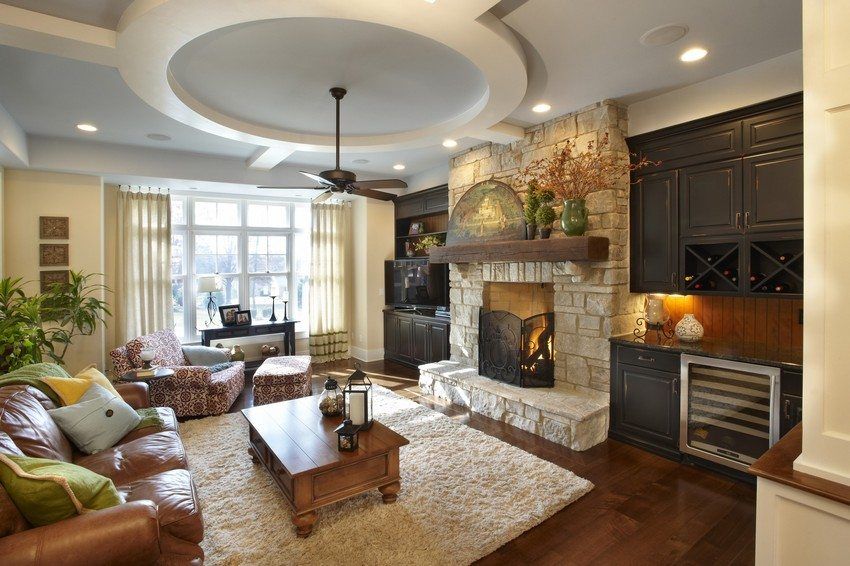
Photos or sketches of designers will help highlight two main types of ceiling structures made of plasterboard: single-level and multi-level.

